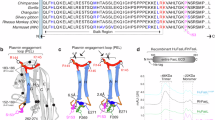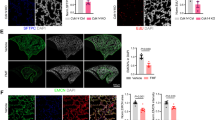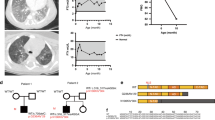Abstract
We determined the time-specific effects of FasL overexpression on perinatal alveolar type II cell growth kinetics. To achieve temporal overexpression of respiratory epithelium-specific FasL expression, tetracycline inducible CCSP-rtTA/FasL-TetOp transgenic mice were given doxycycline (Dox) from gestational d 14 (E14) to E19 (antenatal treatment group), from postnatal d 1 (P1) to P7 (postnatal group), or from E14 to P7 (combined antenatal and postnatal group). Antenatal Dox administration induced an increase of pulmonary FasL mRNA levels in double transgenic animals up to >300-fold over single transgenic littermate controls, associated with massive fetal respiratory epithelial apoptosis and excessive postnatal lethality. Although animals from the combined antenatal/postnatal Dox treatment group continued to display evidence of increased apoptosis, there was a paradoxical increase in alveolar type II cell proliferation, resulting in a net increase in type II cell density, elevated pulmonary surfactant protein C levels and improved postnatal survival. Postnatal Dox administration was also associated with increased type II cell density, although FasL up-regulation was more variable. In conclusion, these results, and our previous studies, suggest that FasL signaling has dual timing-dependent proapoptotic and proproliferative effects on postcanalicular type II cell kinetics.
Similar content being viewed by others
Log in or create a free account to read this content
Gain free access to this article, as well as selected content from this journal and more on nature.com
or
Abbreviations
- CCSP:
-
Clara cell secretory protein
- Dox:
-
doxycycline
- rtTA:
-
reverse tetracycline-transactivator
- SP-C:
-
surfactant protein-C
References
Nagata S 1999 Fas ligand-induced apoptosis. Annu Rev Genet 33: 29–55
Guicciardi ME, Gores GJ 2009 Life and death by death receptors. FASEB J 23: 1625–1637
Strasser A, Jost PJ, Nagata S 2009 The many roles of FAS receptor signaling in the immune system. Immunity 30: 180–192
Alderson MR, Armitage RJ, Maraskovsky E, Tough TW, Roux E, Schooley K, Ramsdell F, Lynch DH 1993 Fas transduces activation signals in normal human T lymphocytes. J Exp Med 178: 2231–2235
Desbarats J, Newell MK 2000 Fas engagement accelerates liver regeneration after partial hepatectomy. Nat Med 6: 920–923
Freiberg RA, Spencer DM, Choate KA, Duh HJ, Schreiber SL, Crabtree GR, Khavari PA 1997 Fas signal transduction triggers either proliferation or apoptosis in human fibroblasts. J Invest Dermatol 108: 215–219
Nelson DP, Setser E, Hall DG, Schwartz SM, Hewitt T, Klevitsky R, Osinska H, Bellgrau D, Duke RC, Robbins J 2000 Proinflammatory consequences of transgenic fas ligand expression in the heart. J Clin Invest 105: 1199–1208
Shinohara H, Yagita H, Ikawa Y, Oyaizu N 2000 Fas drives cell cycle progression in glioma cells via extracellular signal-regulated kinase activation. Cancer Res 60: 1766–1772
Choi C, Gillespie GY, Van Wagoner NJ, Benveniste EN 2002 Fas engagement increases expression of interleukin-6 in human glioma cells. J Neurooncol 56: 13–19
Schaub FJ, Han DK, Liles WC, Adams LD, Coats SA, Ramachandran RK, Seifert RA, Schwartz SM, Bowen-Pope DF 2000 Fas/FADD-mediated activation of a specific program of inflammatory gene expression in vascular smooth muscle cells. Nat Med 6: 790–796
Jarad G, Wang B, Khan S, DeVore J, Miao H, Wu K, Nishimura SL, Wible BA, Konieczkowski M, Sedor JR, Schelling JR 2002 Fas activation induces renal tubular epithelial cell beta 8 integrin expression and function in the absence of apoptosis. J Biol Chem 277: 47826–47833
Carlile GW, Smith DH, Wiedmann M 2009 A non-apoptotic role for Fas/FasL in erythropoiesis. FEBS Lett 583: 848–854
Biancone L, Martino AD, Orlandi V, Conaldi PG, Toniolo A, Camussi G 1997 Development of inflammatory angiogenesis by local stimulation of Fas in vivo. J Exp Med 186: 147–152
Albertine KH, Soulier MF, Wang Z, Ishizaka A, Hashimoto S, Zimmerman GA, Matthay MA, Ware LB 2002 Fas and fas ligand are up-regulated in pulmonary edema fluid and lung tissue of patients with acute lung injury and the acute respiratory distress syndrome. Am J Pathol 161: 1783–1796
Hagimoto N, Kuwano K, Nomoto Y, Kunitake R, Hara N 1997 Apoptosis and expression of Fas/Fas ligand mRNA in bleomycin-induced pulmonary fibrosis in mice. Am J Respir Cell Mol Biol 16: 91–101
Matute-Bello G, Liles WC, Frevert CW, Nakamura M, Ballman K, Vathanaprida C, Kiener PA, Martin TR 2001 Recombinant human Fas ligand induces alveolar epithelial cell apoptosis and lung injury in rabbits. Am J Physiol Lung Cell Mol Physiol 281: L328–L335
Matute-Bello G, Liles WC, Steinberg KP, Kiener PA, Mongovin S, Chi EY, Jonas M, Martin TR 1999 Soluble Fas ligand induces epithelial cell apoptosis in humans with acute lung injury (ARDS). J Immunol 163: 2217–2225
Perl M, Chung CS, Perl U, Lomas-Neira J, de Paepe M, Cioffi WG, Ayala A 2007 Fas-induced pulmonary apoptosis and inflammation during indirect acute lung injury. Am J Respir Crit Care Med 176: 591–601
De Paepe ME, Mao Q, Embree-Ku M, Rubin LP, Luks FI 2004 Fas/FasL-mediated apoptosis in perinatal murine lungs. Am J Physiol Lung Cell Mol Physiol 287: L730–L742
De Paepe ME, Gundavarapu S, Tantravahi U, Pepperell JR, Haley SA, Luks FI, Mao Q 2008 Fas-ligand-induced apoptosis of respiratory epithelial cells causes disruption of postcanalicular alveolar development. Am J Pathol 173: 42–56
Mao Q, Gundavarapu S, Patel C, Tsai A, Luks FI, De Paepe ME 2008 The Fas system confers protection against alveolar disruption in hyperoxia-exposed newborn mice. Am J Respir Cell Mol Biol 39: 717–729
Amy RW, Bowes D, Burri PH, Haines J, Thurlbeck WM 1977 Postnatal growth of the mouse lung. J Anat 124: 131–151
Schmittgen TD, Livak KJ 2008 Analyzing real-time PCR data by the comparative C(T) method. Nat Protoc 3: 1101–1108
Acknowledgements
We thank Dr. J. F. Padbury for review of the article.
Author information
Authors and Affiliations
Corresponding author
Additional information
Supported, in part, by NIH P20-RR18728 [M.E.D.P.].
Rights and permissions
About this article
Cite this article
de Paepe, M., Haley, S., Lacourse, Z. et al. Effects of Fas-Ligand Overexpression on Alveolar Type II Cell Growth Kinetics in Perinatal Murine Lungs. Pediatr Res 68, 57–62 (2010). https://doi.org/10.1203/PDR.0b013e3181e084af
Received:
Accepted:
Issue date:
DOI: https://doi.org/10.1203/PDR.0b013e3181e084af
This article is cited by
-
Ex vivo expanded human cord blood-derived hematopoietic progenitor cells induce lung growth and alveolarization in injured newborn lungs
Respiratory Research (2013)
-
The CD95/CD95L pathway is involved in phagocytosis-induced cell death of monocytes and may account for sustained inflammation in neonates
Pediatric Research (2013)



